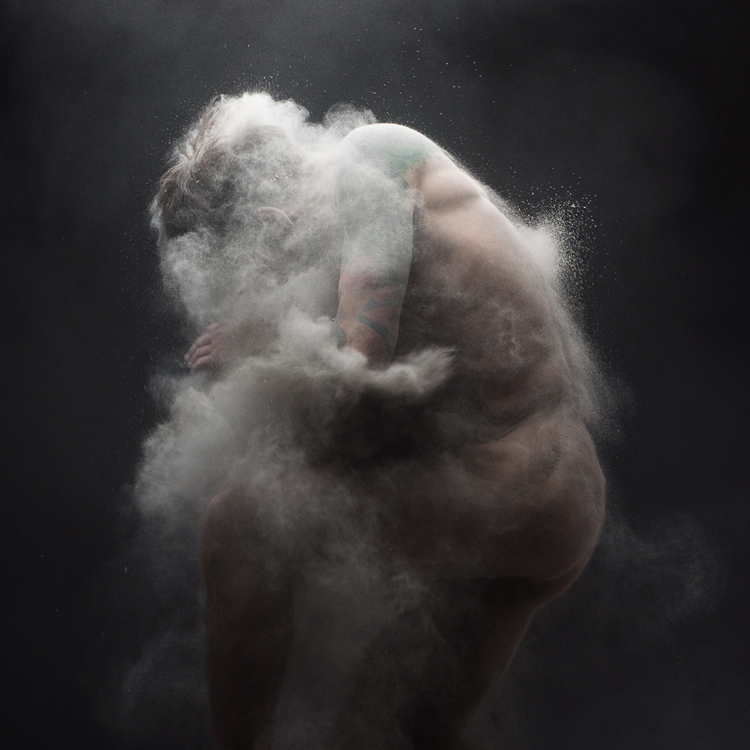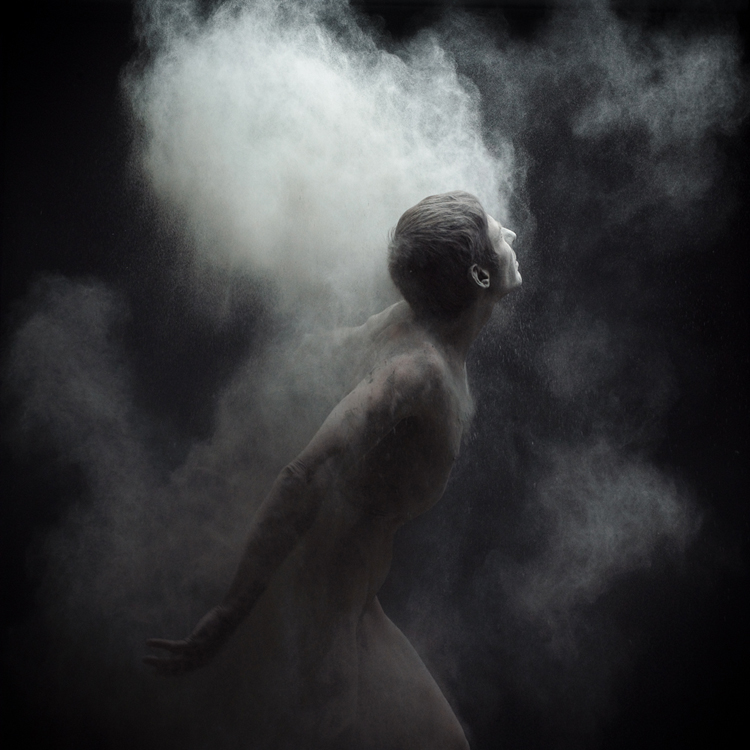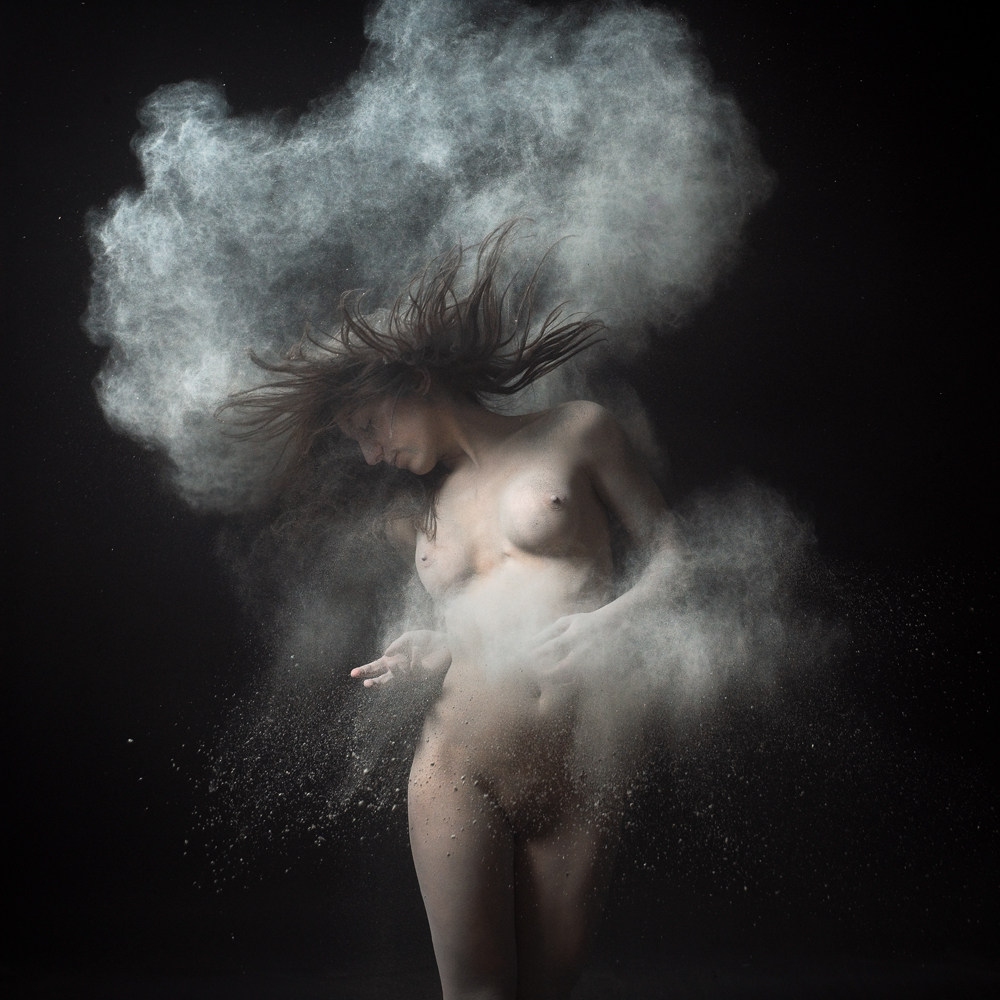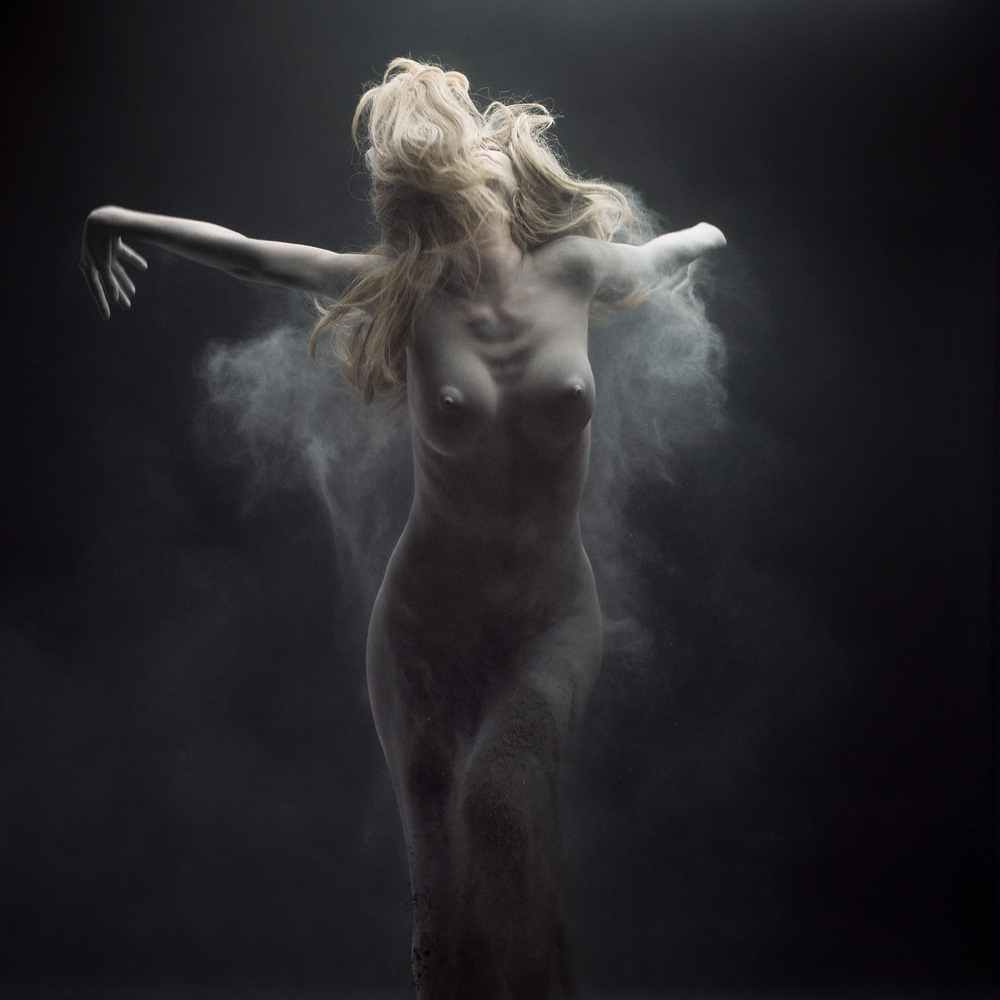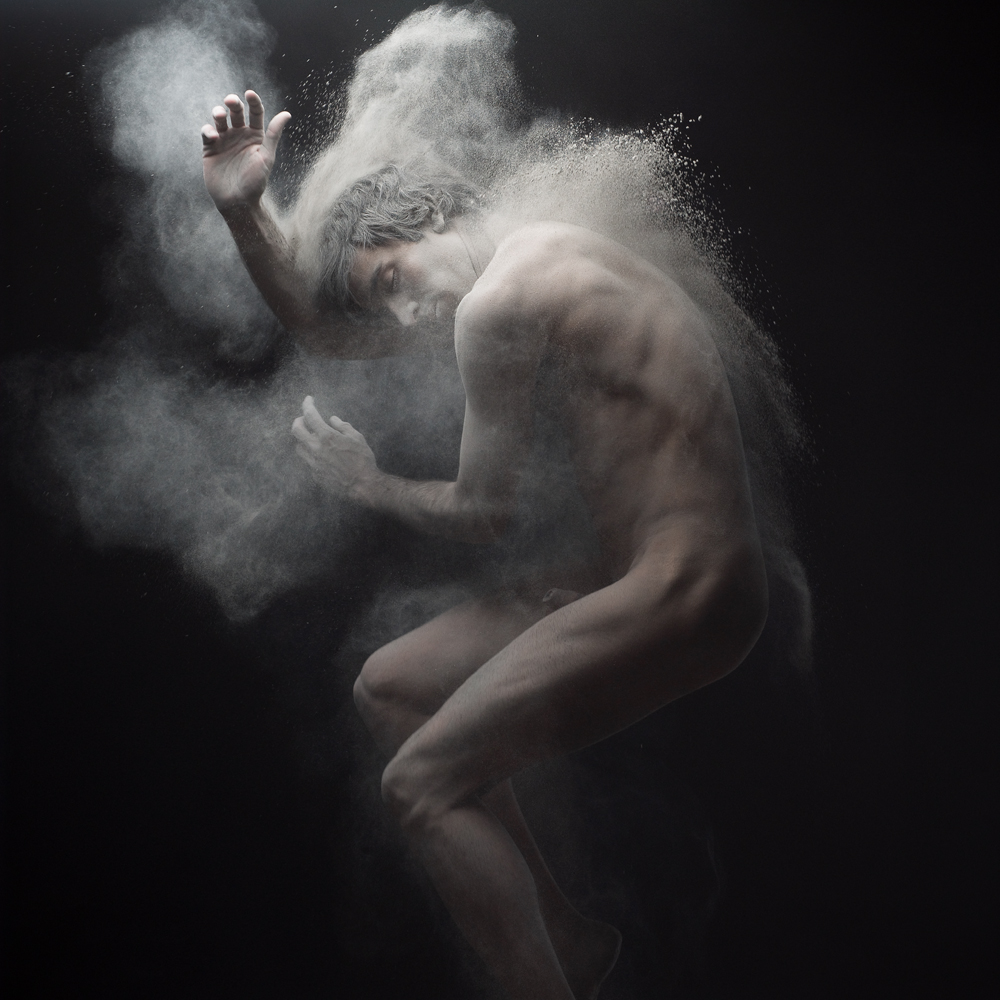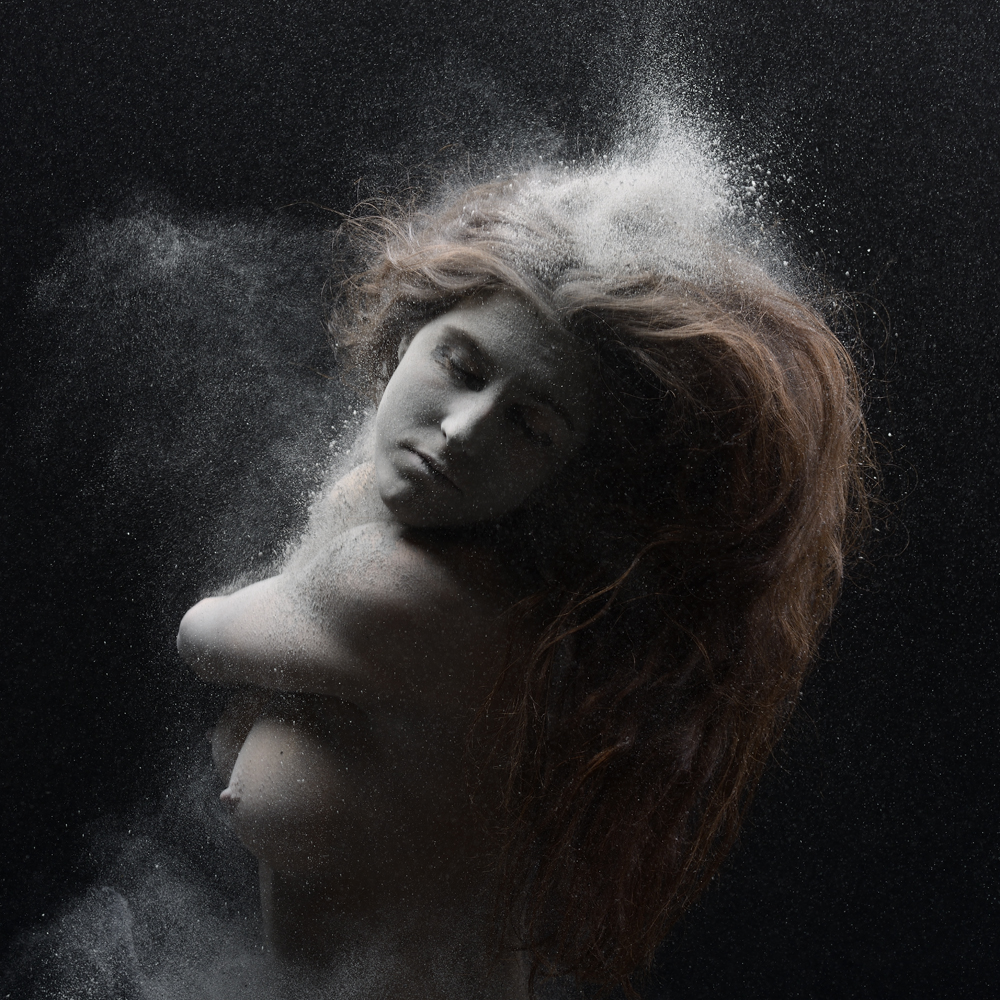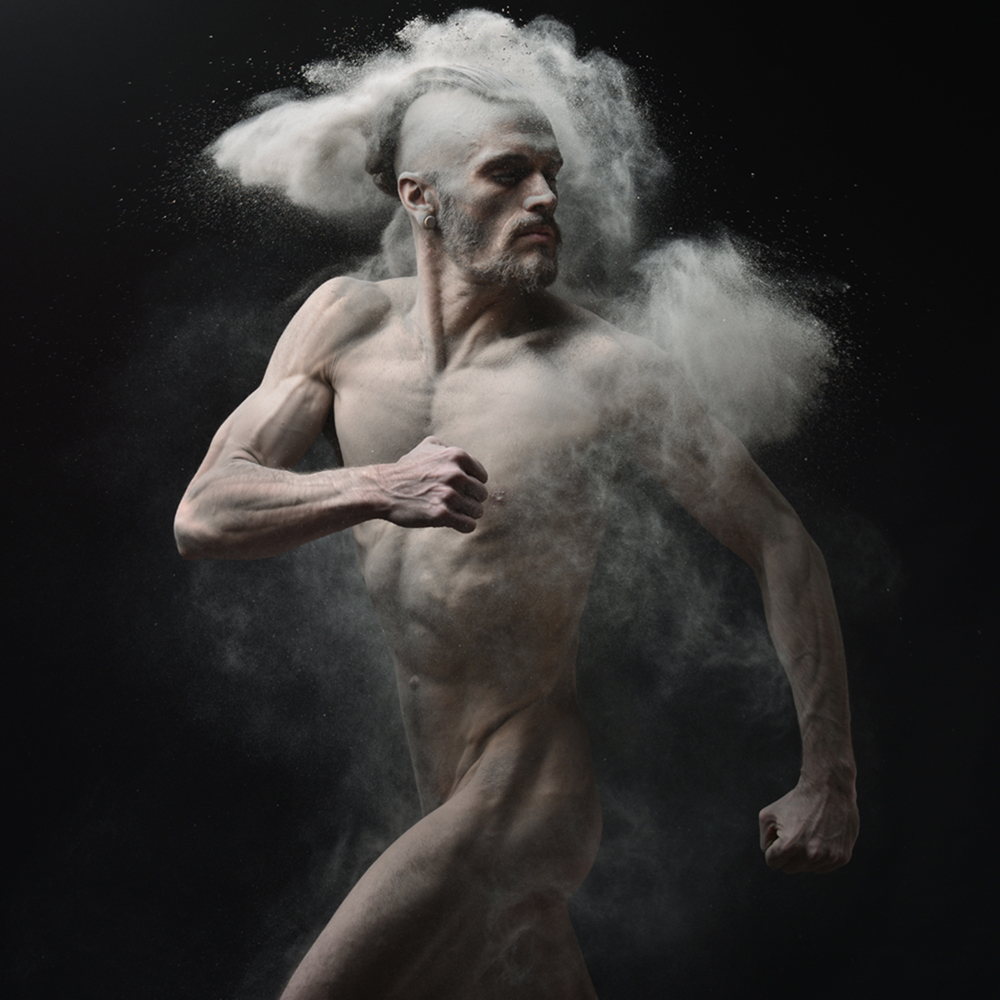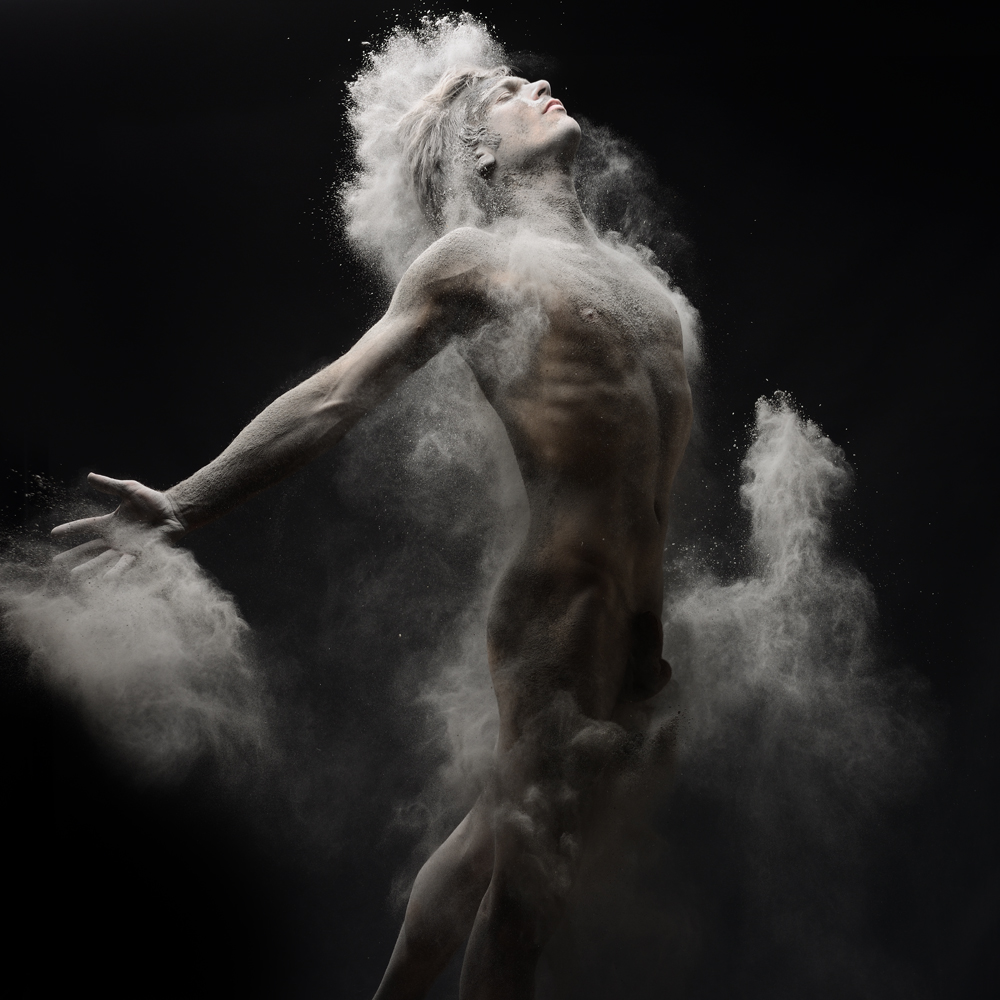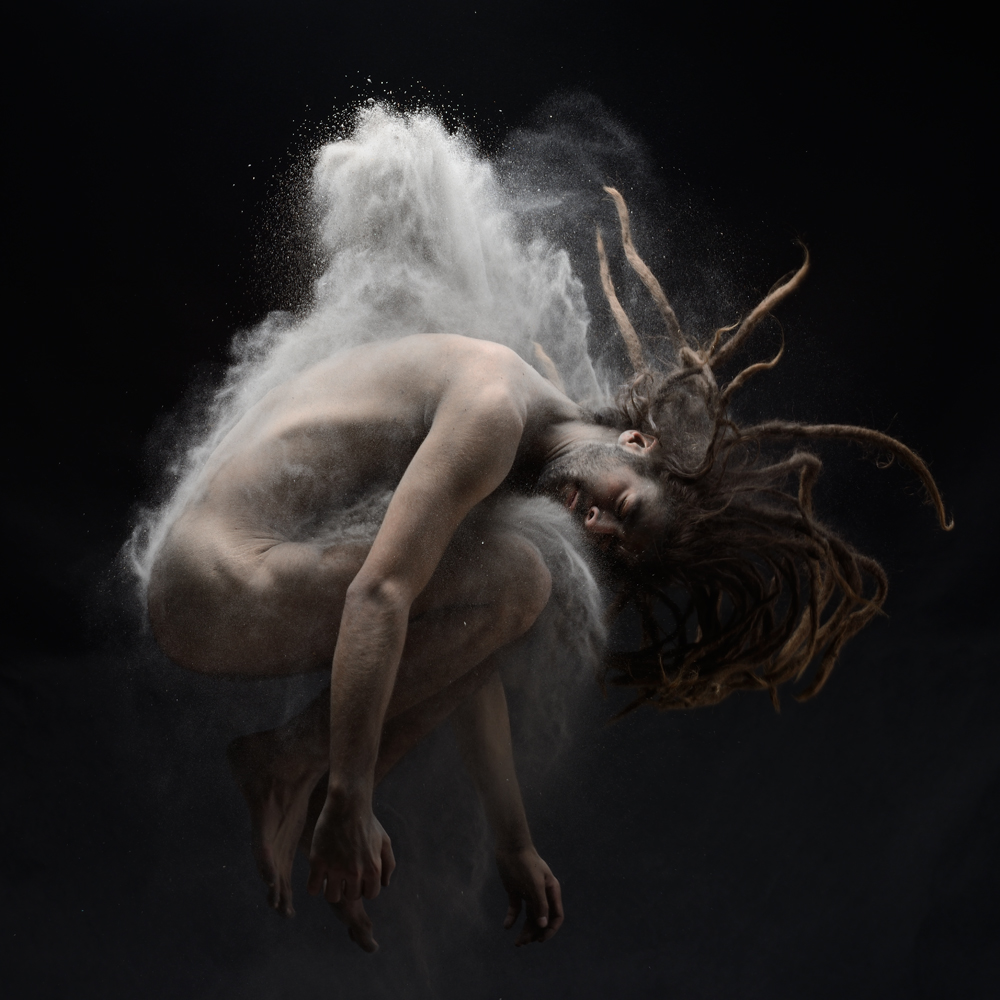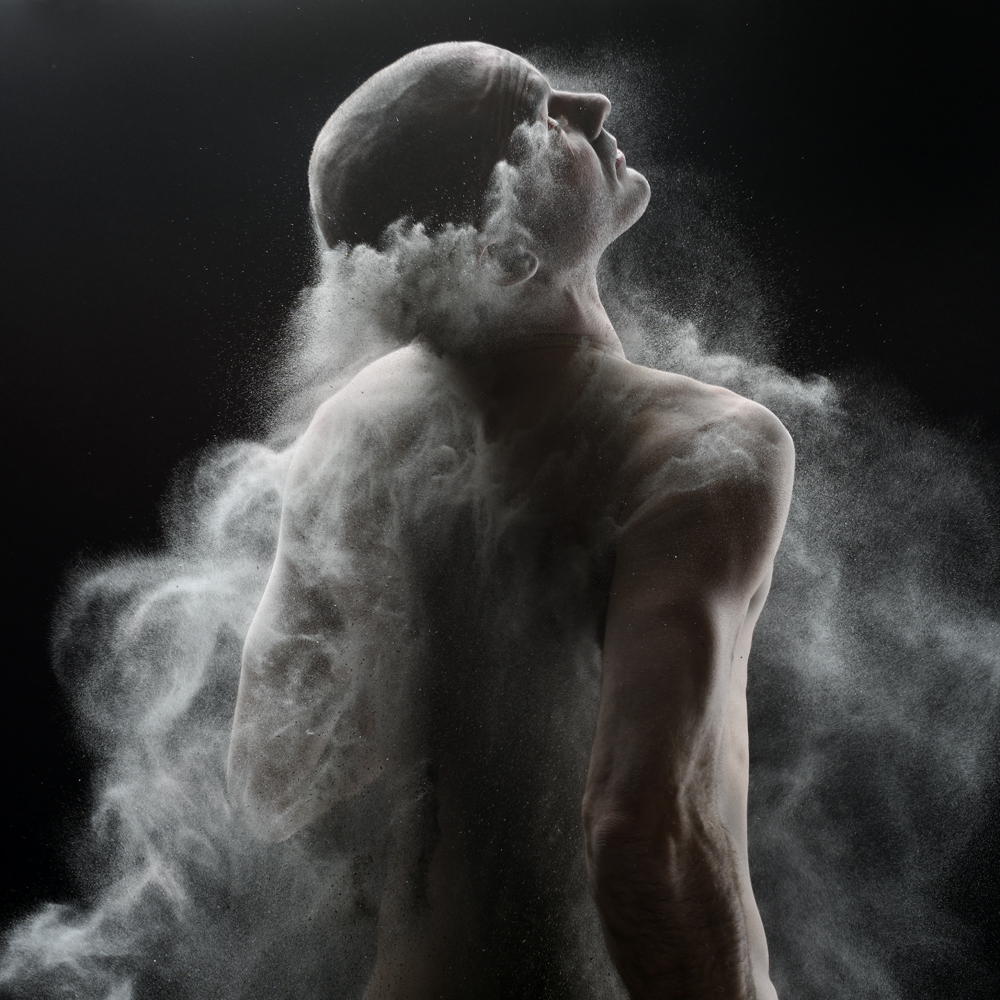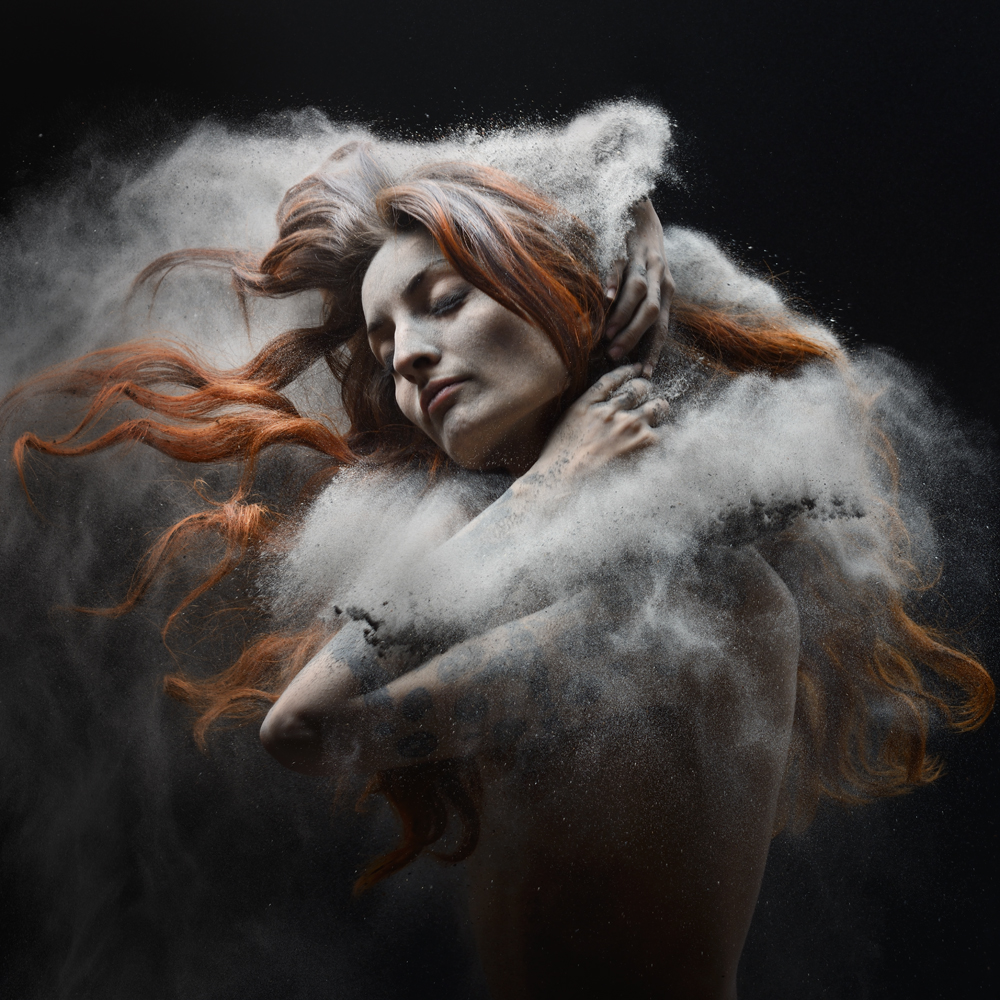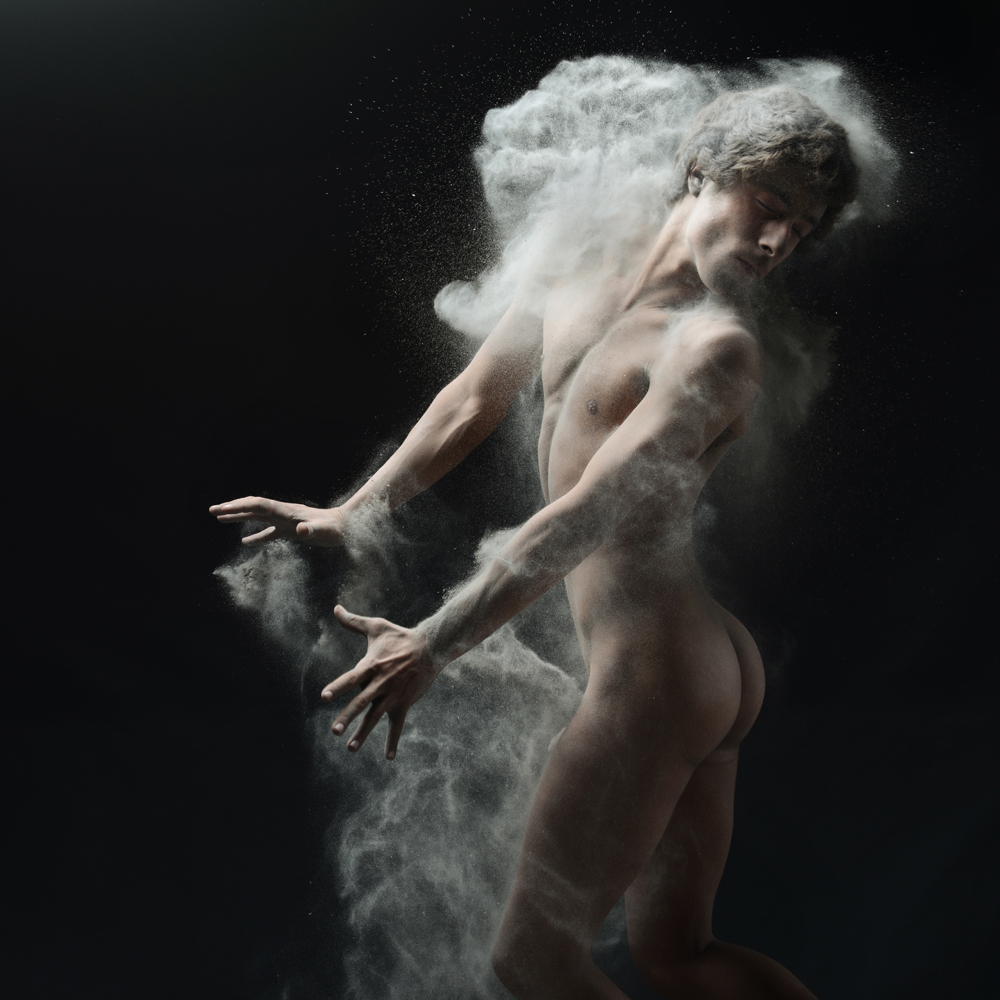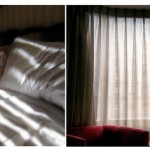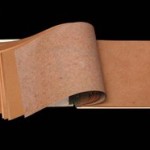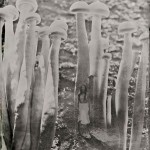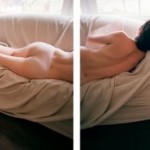France Week: Olivier Valsecchi
I first became aware of the body of work (literally and figuratively) of Olivier Valsecchi while perusing a series of interesting photo spreads in an issue of “Photo” magazine published in France in March/April of 2016. The issue was devoted to the photography of the nude and Olivier’s series, “Drifting“, caught my eye for its minimalist elegance and painterly qualities. Soon after reading about his work, I saw that the Opiom Gallery, here in Provence in the village of Opio, was having a solo exhibition of his work. As an avid collector and practitioner, I made a beeline for the show and promptly acquired one of the images from the “Drifting” series but was also quite taken with some of his earlier work, including “Dust” and “Klecksography“, both of which deal with the nude image in unique contexts.
Olivier Valsecchi was born in Paris in 1979. He was a self-taught photographer experimenting with self-portraiture for ten years prior to perfecting his technique at ETPA, School of Photography, in Toulouse where he was awarded the Grand Prize for Photography in June, 2009. His work utilizes the nude form to address mythological themes, the conflict between order and disorder and a latent dream state representing the discord in contemporary life. He has had numerous solo exhibitions worldwide and in 2012, he was the recipient of the prestigious Hasselblad Masters Award in Fine Art. His work has been published widely in photographic magazines including Eyemazing, Photo, Azartphoto, Zoom and others. His work has also been seen at diverse art fairs throughout France and internationally. He currently resides in Toulouse, France.
Dust (2009) and Time of War (2012)
My two series, “Dust” and “Time of War” create instruments from the bodies of others to generate a personal trance that allows me to project a self-portrait in which I do not personally appear but that conveys my emotions.
The series “Dust” is a gallery of romantic “paintings” that capture the moment of incarnation, the emptiness and the chaos precipitating the birth of the world as described in Greek mythology. Each image is a confined space in which one can observe the interplay of order and disorder; light and shadow; descent and ascent; and fog and clarity. Each image is a mirror of an era in permanent quest for renewal and rebirth. The bodies are covered in ashes, an echo of Ash Wednesday and the myth of the Phoenix.
The second series, “Time of War” derives its title from an exhibit at the Prado Museum in 2008 of Goya’s “Times of War”. The work feeds on the climate of current conflicts to express a dream chronicle of the feeling of war and aggression latent in our time. I searched for images more flamboyant or more horrific than those of “Dust”.
How do you see yourself as a photographer?
I am more a creator than a recorder of reality. Rather, I record a reality that I create artificially. It is hard to define myself in this way, as I never really have had the need to do so. I could simply tell you that I am a portraitist and photographer of nudes, but that does not satisfy me, because I create a universe that goes beyond the confines of those boxes.
What are your creative processes in coming up with a project?
If I am responding to a commission, the starting point is the “brief” that I am given whereby I am sensitive to a particular keyword that opens a door to my personal references and evokes particular visions for me. In responding to a personal project, it often starts with an image, a photograph, or a painting, that inspires something in me to look for what is missing. The series that best illustrates this purpose is “Klecksography” that was inspired by Rorschach tests. I created images over already existing images…human sculptures over ink drawings.
What are the obstacles you encounter in developing a project?
The search for models is my major constraint. I often have a precise idea about the type of physique that I wish to photograph and finding that person is like looking for a needle in a haystack. Additionally, once I find the right person to pose for me, as it is generally in the nude, I must explain that it is not vulgar, it is not voyeuristic but rather a serious artistic endeavor. In short, casting for a shoot is a complex and very time-consuming step.
Each project has its own constraints according to the concept and idea of the project. For the series, “Dust”, I had to shoot in large spaces and with high enough ceilings so that the models were able to jump with dust everywhere and lights around them while still not upsetting them. Obviously, I cannot shoot this type of project at my home and I must find an appropriate location.
Who are your muses?
I have had models that inspired some photos, or even an entire project. I think of my friend, Lisa Pauton, a contortionist, who practically co-created the project, “Drifting”, in that she participated so actively during the shoot.
But as you know, inspiration is a curious beast. It can take the form of a hand-woven carpet, a news item in the newspaper, a person you furtively cross in the street, a memory, a movie. I believe above all that it is an energy, an encounter between your mind and that of another, an idea that you had in your head and that comes to the surface thanks to an event, a sound, a sentence, a look, that makes you say: “that’s it, my idea can come true, it’s the right moment, it’s the right person.”
Your work seems to imply an almost surreal approach to portraiture and the nude form. Where does that originate?
I like photos that do not truly resemble photos. It suits me, as I always liked to take things beyond their reality. I shoot a nude figure but that is not the reality, because the total picture outweighs the detail of the naked body. I think the first thing we see in my photos is the concept or the play of light, and then, at last, the body.
I make self-portraits that are not really self-portraits, because I do not appear systematically in the image. Yet it is me that takes the photograph and I seek in the subject what binds me to him or her, and not what differentiates me from them. I am seeking part of myself in the subject. That’s why I always photograph the same type of physiques…i.e. very thin. I need to see myself in the other, to make them move as I would move as if I were in his or her body. The photography that I admire is a photograph that does not depict reality as I can see it when I leave my home, but one that makes me enter the brain of its author, their fantasies, their universe, their perversions, their intimacy.
Posts on Lenscratch may not be reproduced without the permission of the Lenscratch staff and the photographer.
Recommended
-
Tara Sellios: Ask Now the BeastsApril 6th, 2024
-
ALEXIS MARTINO: The Collapsing Panorama April 4th, 2024
-
Emilio Rojas: On Gloria Anzaldúa’s Borderlands: The New MestizaMarch 30th, 2024
-
Artists of Türkiye: Eren SulamaciMarch 27th, 2024
-
Love and Loss in the Cosmos: Valeria Sestua In Conversation with Vicente IsaíasMarch 19th, 2024

